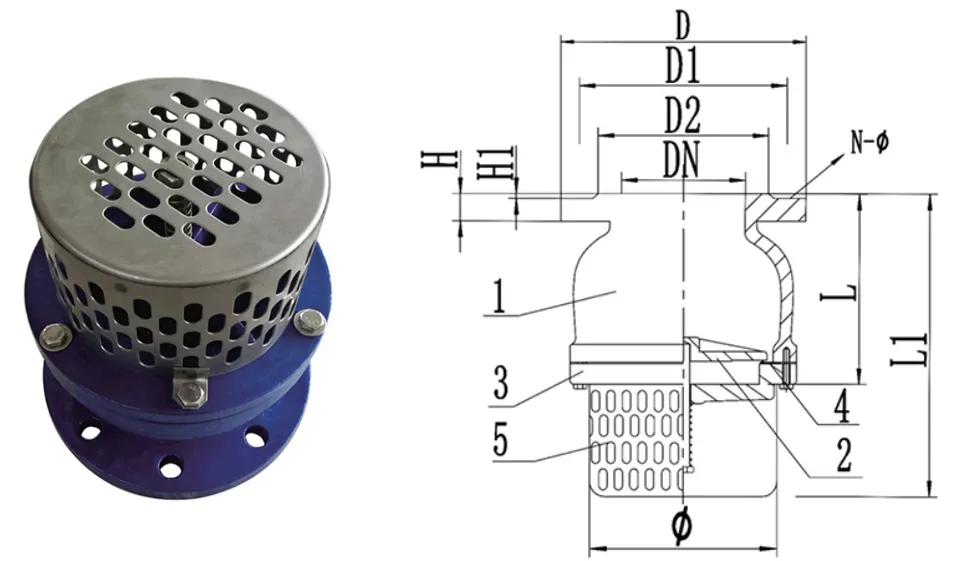Desemba . 04, 2024 09:59 Back to list
pneumatic ball valve
Understanding Pneumatic Ball Valves Features and Applications
Pneumatic ball valves are integral components in modern industrial automation and process control systems. Their primary function is to regulate the flow of gases and liquids, making them essential in various applications across sectors such as oil and gas, food and beverage, pharmaceuticals, and more. This article explores the features, advantages, and applications of pneumatic ball valves.
Features of Pneumatic Ball Valves
1. Design and Construction Pneumatic ball valves consist of a spherical disc (the ball) with a hole (bore) through its center. This design allows for smooth and quick flow control. When the valve is open, the bore is aligned with the flow, permitting maximum flow rate. Conversely, when closed, the ball rotates 90 degrees to block the flow.
2. Actuation These valves are actuated using compressed air. The pneumatic actuator attached to the valve allows for remote control and automation in systems. This setup enables rapid open and close actions, contributing to precise flow control and response times.
3. Materials Pneumatic ball valves are available in various materials, including stainless steel, brass, and plastic. The choice of material is crucial as it affects the valve’s resistance to corrosive substances, pressure, and temperature variations.
4. Sealing and Leak Prevention High-quality pneumatic ball valves often feature robust seals, such as PTFE (polytetrafluoroethylene) or other elastomers, which help to minimize leaks and ensure a tight shut-off. This is particularly vital in applications where preventing leaks can save costs and ensure safety.
Advantages of Pneumatic Ball Valves
1. Speed One of the most significant advantages of pneumatic ball valves is their ability to operate swiftly. The use of compressed air allows for rapid valve actuation, making it ideal for processes requiring quick shut-off and flow control.
2. Durability Pneumatic ball valves are designed for longevity. They can withstand high pressures and varying temperatures, making them suitable for a wide range of applications without frequent replacement or maintenance.
3. Space Saving The compact design of these valves means they take up less space in piping systems. This characteristic is particularly valuable in environments where space is limited.
pneumatic ball valve

4. Automation-Friendly Pneumatic ball valves easily integrate with automated control systems. Their compatibility with various control signals, such as PLCs (Programmable Logic Controllers), enables engineers to design highly efficient and automated processes.
5. Versatility These valves can handle different media types, including gases, liquids, and slurries, making them versatile solutions for diverse industries.
Applications of Pneumatic Ball Valves
1. Oil and Gas In the oil and gas industry, pneumatic ball valves are widely used in controlling the flow of hydrocarbons during extraction, refining, and distribution processes. Their reliability and durability are essential in maintaining safety and efficiency.
2. Water Treatment These valves play a crucial role in water treatment plants, where they help in regulating the flow of water and chemicals used in purification processes.
3. Food and Beverage Compliance with hygiene standards is paramount in the food and beverage industry. Pneumatic ball valves made from food-grade materials ensure safe and efficient processing of consumables.
4. Pharmaceuticals Precision and safety are critical in pharmaceutical manufacturing. Pneumatic ball valves provide the necessary control for mixing and transporting sensitive ingredients.
5. Chemical Process Industries In chemical processing, these valves manage the flow of various aggressive chemicals, providing leak-proof operation under demanding conditions.
Conclusion
Pneumatic ball valves exemplify an ideal solution for fluid control in various industrial applications. With their combination of speed, durability, and automation compatibility, they are crucial in enhancing process efficiency and maintaining safety standards across sectors. As industries continue to evolve, the role of pneumatic ball valves will only become more significant, reflecting the ongoing demand for innovation in flow control technologies.
Share
-
Priming a Pump with a Foot Valve with StrainerNewsAug.23,2025
-
The Importance of a Y Strainer in Pump ProtectionNewsAug.23,2025
-
Stainless Steel Ball Check Valve for High-Purity ApplicationsNewsAug.23,2025
-
Common Applications for Wafer Type Butterfly ValvesNewsAug.23,2025
-
Seat Options for a 12 Inch Knife Gate ValveNewsAug.23,2025
-
The Lifespan of a Typical Dismantling JointNewsAug.23,2025


